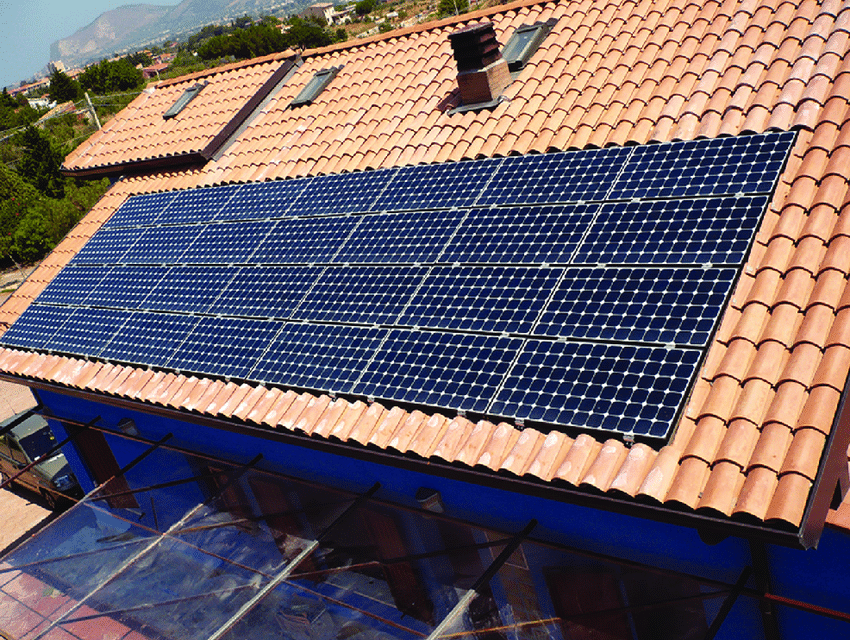Image source: Canva.com
Photovoltaic (PV) systems, which convert sunlight into electricity, are a cornerstone of the global shift toward renewable energy. As the adoption of solar energy grows, understanding its economic and environmental impacts becomes essential for policymakers, businesses, and individuals. This article explores the dual benefits of PV systems – how they contribute to economic growth and environmental preservation.
Economic Impact of PV Systems

The rapid expansion of the PV industry has created significant economic opportunities. Below are some of the key economic impacts:
Job Creation
- The solar industry generates millions of jobs worldwide, spanning manufacturing, installation, maintenance, and research and development.
- The U.S. solar industry experienced a 6% increase in jobs last year, reaching nearly 280,000 – the highest level on record – according to the annual National Solar Jobs Census released by the nonprofit Interstate Renewable Energy Council.
Energy Cost Savings
- PV systems reduce electricity costs for homeowners, businesses, and utilities.
- The cost of solar power has plummeted by more than 80% over the past decade, making it one of the cheapest energy sources available.
Boost to Local Economies
- Local communities benefit from the development of solar projects through increased tax revenues, lease payments to landowners, and economic activity during construction phases.
Energy Independence
- Countries and regions that invest in PV systems reduce their reliance on imported fossil fuels, improving energy security and stabilizing energy prices.
Return on Investment (ROI)
- PV systems have become a financially viable investment for many, with payback periods as short as 5–7 years in some cases.
- Governments often offer incentives, tax credits, and grants, further improving ROI for solar installations.
Innovation and Technological Growth
- The PV sector drives innovation in energy storage, efficiency, and grid integration, spurring technological advancements with economic benefits.
Environmental Impact of PV Systems

PV systems are celebrated for their ability to generate clean energy, but their environmental benefits extend far beyond emissions reduction.
Reduction in Greenhouse Gas Emissions
- By displacing fossil fuel-based electricity, PV systems significantly reduce greenhouse gas emissions.
- A typical residential PV system can offset around 3–4 tons of carbon dioxide annually.
Lower Air and Water Pollution
- Unlike coal or natural gas plants, PV systems do not emit harmful pollutants like sulfur dioxide, nitrogen oxides, or particulate matter.
- They also consume minimal water, unlike conventional power plants that require vast quantities for cooling.
Mitigation of Climate Change
- Widespread adoption of PV systems can help achieve global climate goals, such as limiting global warming to 1.5°C under the Paris Agreement.
- Land Use and Biodiversity:
- While large-scale solar farms require land, innovative approaches such as agrivoltaics (combining solar panels with agriculture) can minimize land-use conflicts and even enhance biodiversity.
Waste and Recycling Challenges
- As PV systems reach the end of their life cycle, proper recycling of solar panels is crucial to manage waste and recover valuable materials.
- New technologies and policies are emerging to address this challenge, ensuring the long-term sustainability of solar energy.
Balancing Economic and Environmental Goals
While PV systems offer immense benefits, they also pose challenges that require careful planning and management:

- Initial Investment:
- Despite declining costs, the upfront expense of installing PV systems can be a barrier for some individuals and organizations.
- Innovative financing options, such as leasing and power purchase agreements, are making solar more accessible.
- Manufacturing Impact:
- The production of solar panels involves energy-intensive processes and the use of raw materials like silicon and rare earth metals.
- Ensuring sustainable manufacturing practices and reducing energy use during production are priorities for the industry.
- Integration into the Energy Grid:
- Large-scale PV adoption requires updates to energy grids to handle distributed generation and intermittency issues.
- Investments in energy storage and smart grid technologies are addressing these concerns.
The Future of PV Systems
The economic and environmental impact of PV systems is set to grow as technology advances and adoption expands. Key trends shaping the future include:
- Improved Efficiency:
- Advances in PV cell technology, such as bifacial panels and perovskite solar cells, promise higher efficiency and lower costs.
- Energy Storage Integration:
- Pairing PV systems with battery storage systems enhances reliability and allows for round-the-clock clean energy availability.
- Decentralized Energy Systems:
- Distributed PV systems empower individuals and communities to produce their own energy, reducing dependency on centralized grids.
- Global Equity in Access:
- Expanding PV systems in developing regions can bridge energy access gaps, fostering sustainable economic development.

BIPV: Revolutionizing the Way We Generate Energy
Photovoltaic systems are transforming the energy landscape by delivering substantial economic and environmental benefits. They drive job creation, energy independence, and cost savings while significantly reducing greenhouse gas emissions and pollution. As the world strives for a sustainable future, the role of PV systems will only grow, highlighting the need for continued innovation, supportive policies, and widespread adoption. By leveraging their full potential, societies can achieve a cleaner, greener, and more prosperous future.





